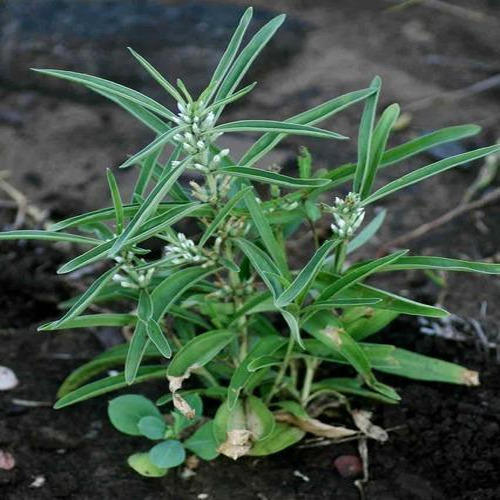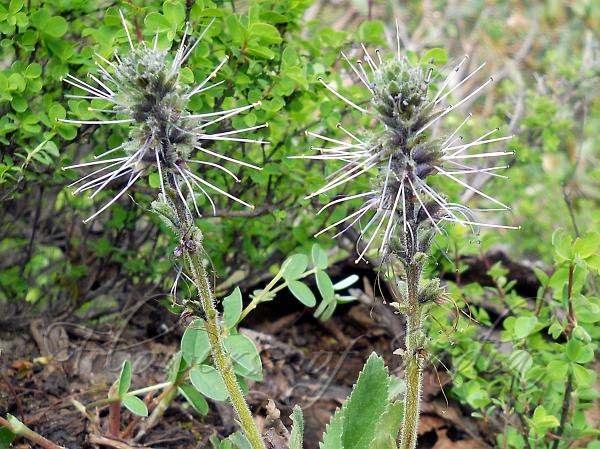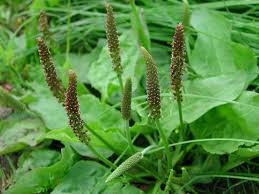跳到商品資訊


目前無法提供取貨服務
Melionsbrother
SIZE 6 X 10 TABLETS
Multi‐drug ayurvedic formulation that helps in the management of diabetes mellitus, dyslipidemia, metabolic syndrome, obesity, PCOS.
-
Anti‐diabetic (madhu‐meha‐hara) ‐ Decreases raised blood glucose possibly by – i. enhancing tissue sensitivity to insulin, (ii) and/or stimulating β cells of Langerhans to increase insulin production
-
Stimulates fat breakdown (medo‐hara) and thus lowers excess body fat, raised blood cholesterol and triglycerides, and raises low HDL cholesterol
-
Corrects hypothalamic‐pituitary thyroid / ovarian dysfunction (udana‐samana‐apana samyak)
-
Counter atherosclerosis (dhamani‐pratichaya‐hara)
-
Anticoagulant (rakta‐granthi‐hara)
Mamajjak (Enicostemma littorale)

Mamajjak is a well known remedy in ayurveda for the management of madhumeha (diabetes type2). Ayurveda texts describe it as dipana-pachana (metabolic stimulant), vata-anulomaka (harmonizes neuro-endocrine activity), and tikta-paushtika (bitter-nutrient)1. All these actions are indicative of the profound effects of Mamajjak on the carbohydrate and fat metabolism. In an experimental study, Prince and Srinivasan, found that it significantly decreases the blood glucose, TBARS, SOD, CAT and GPx, in diabetic rats, which was comparable with the standard drug insulin2. Similarly, in another study, Vishwakarma et al. found that it reduces the food, water intake and glucose and AUC glucose levels and decreased the serum glucose, serum cholesterol and triglyceride levels in the diabetic rats.
Meshashringi (Gymnema sylvestre)

Mesha-shringi (Gurmar) is a widely known anti-diabetic drug of ayurveda. Ayurveda texts describe it as meha-pranut (anti-diabetic), dipana (metabolic stimulant), visha-apaham (anti-toxic), ruksha / kapha-pranut (catabolic), and tikta (bitter / anti-lipid).1 All these actions indicate its potent effects on the carbohydrate and fat metabolism. Recent studies have confirmed the hypoglycemic effect of the Meshashringi. In an experimental study, gymnemagenin and gymnemic acids present in G. sylvestre (Mesha-shringi) were seen to possess anti-hyperglycemic activity.2 In another study, the anti-hyperglycemic effect its various fractions and glycosides was reported.3 Finally, it has been concluded from the studies that it possesses anti-diabetic effect and sugar inactivation properties.
Latakaranja (Caesalpinia bonducella)

Lata-karanja has been described in ayurveda as ushna-tikshna (metabolic stimulant), kapha-apaha (immuno-modulating / lowers tissue resistance to insulin), and katu (catabolic).1 Patil et al have reported significant anti- diabetic activity in this medicinal plant that was comparable with glibenclamide.2 In another experimental study, Kunnur et al have reported anti-hyperglycemic, as well as, anti-hyperlipidemic activity in it.
Katuki (Picrorrhiza kurroa)

Katuki is an exceptionally reputed drug of ayurveda. Ayurveda texts describe it as prameha-pranut (anti-diabetic), dipni (metabolic stimulant), kapha-apha (lowers tissue resistance to insulin), tikta (bitter / anti-lipid), ruksha and laghu (catabolic), bhedini (removes the blockages in the insulin receptors on the cell membranes), dipni (metabolic stimulant), hridya (cardio-protective and cardiotoinc), and asra-pranut (blood-purifier e.g., lowers the raised cholesterol).1 All that indicates its usefulness of in the management of the diabetes mellitus and the associated metabolic disorders. An experimental study showed Katuki to increase the insulin-mediated translocation of GLUT-4 from cytosol to plasma membrane which result better glucose uptake by skeletal muscles and improved glycaemic control in diabetic rats.
Pippali (Piper longum)

Pippali has been described as prameha-hara (anti-diabetic), dipani and agni-vardhini (metabolic stimulant), rasayani (immuno-modulator), katuka (pungent / anti-lipid), laghu (catabolic), medo-vinashini and kapha-vinashini (lowers tissue resistance to insulin).1 The anti-hyperglycemic and anti-lipidperoxidative effects of ethanolic extract of Piper longum dried fruits in alloxaninduced diabetic rats were studied2. The blood glucose level, carbohydrate metabolizing enzymes and the status of lipid peroxidation and antioxidants were assayed using specific colorimetric methods. Oral administration of dried fruits has shown significant anti-hyperglycemic, anti-lipidperoxidative and antioxidant effects in diabetic rats comparable to that of the standard reference drug glibenclamide.3 In an experimental study, it has been seen to have bioavailability enhancing activity.
Rakta-marish (Capsicum annuum)

Katuki is an exceptionally reputed drug of ayurveda. Ayurveda texts describe it as prameha-pranut (anti-diabetic), dipni (metabolic stimulant), kapha-apha (lowers tissue resistance to insulin), tikta (bitter / anti-lipid), ruksha and laghu (catabolic), bhedini (removes the blockages in the insulin receptors on the cell membranes), dipni (metabolic stimulant), hridya (cardio-protective and cardiotoinc), and asra-pranut (blood-purifier e.g., lowers the raised cholesterol).1 All that indicates its usefulness of in the management of the diabetes mellitus and the associated metabolic disorders. An experimental study showed Katuki to increase the insulin-mediated translocation of GLUT-4 from cytosol to plasma membrane which result better glucose uptake by skeletal muscles and improved glycaemic control in diabetic rats.
Indravaruni (Citrullus colocynthis)

Indravaruni has been described as prameha-apaham (anti-diabetic), ushna (metabolic stimulant), tikta (anti-lipid), ama-apaham (removes the blockages In the insulin receptors on the cell membranes), visha-apaham (immuno- modulator), laghu (catabolic), kapha-apaham (lowers tissue resistance to insulin).1 In an experimental study, it exhibited significant antidiabetic activity in alloxaninduced diabetic rats. These extracts also showed improvement in such parameters like body weight, lipid profile serum creatinine, serum urea and serum protein as well as enzyme levels of liver.
Weight
80 g
Dimensions
11.3 x 8.2 x 2.5 cm
Dosage & usage:
Adults: 2 tabs tid. Taper off on improvement. Children (6‐9 yrs): ¼‐ ½ of adult dose, in crushed form. To be taken just after meals.
Precautions:
Avoid during pregnancy, children below 6 yrs, bleeding disorders, along with anti‐coagulants. Regular blood test for BT, CT, PT is must for long‐term use. In case of any signs of bleeding, or prolonged BT, CT, PT, and abnormal PTI, stop GLYCIE Tab at once, and manage accordingly.
Available as:
Box containing 6 strips of 10 tablets (60 tablets).
Thank You
